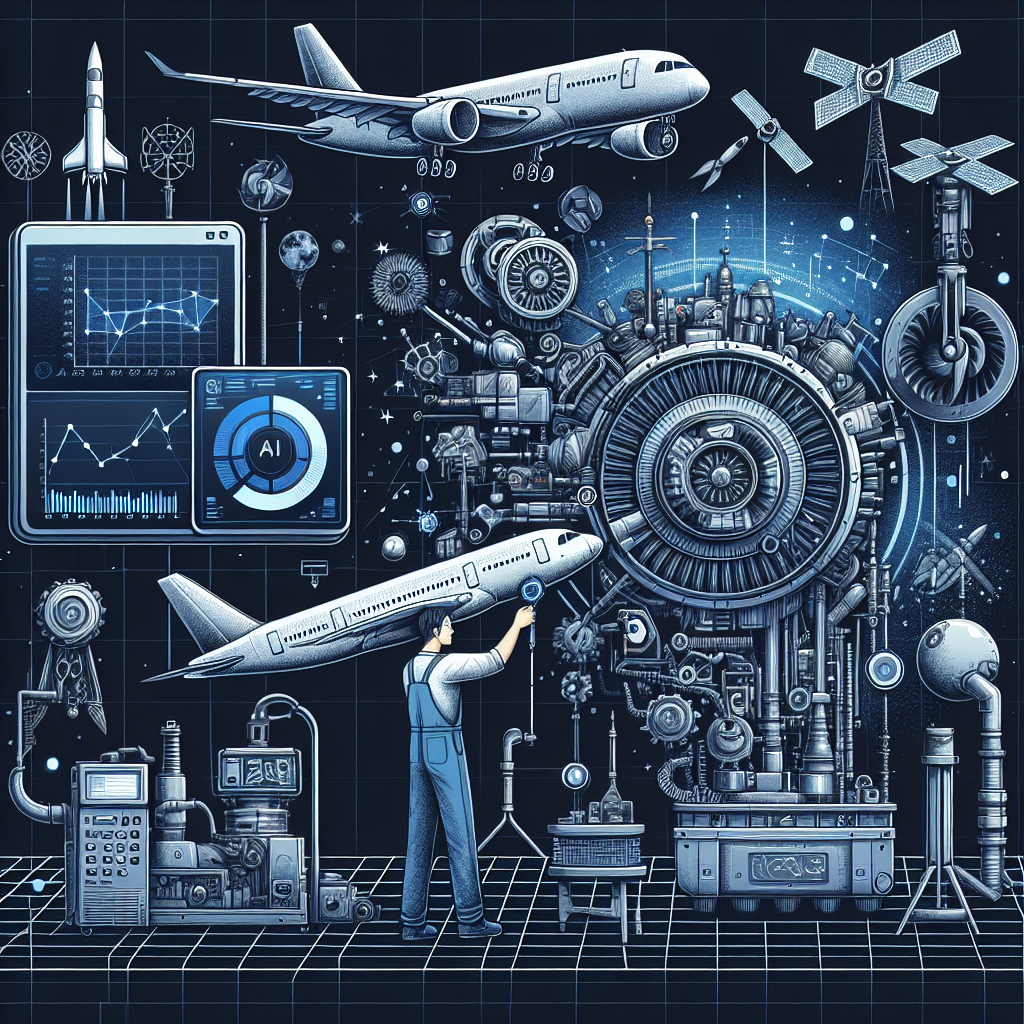Leveraging AI Automation for Predictive Maintenance in Aviation and Aerospace for Airlines
Introduction
The aviation and aerospace industry plays a crucial role in connecting people and goods across the globe. With millions of flights taking off and landing every day, ensuring the safety and reliability of aircraft is of utmost importance. One key aspect of maintaining aircraft in top condition is predictive maintenance, which involves using data and technology to predict when maintenance is needed before a breakdown occurs.
Traditionally, maintenance schedules are based on predetermined intervals or the number of flight hours, which can sometimes lead to unnecessary maintenance or missed opportunities for proactive maintenance. This is where AI automation comes in, offering a more efficient and effective way to monitor aircraft health and predict maintenance needs.
AI Technology in Aviation and Aerospace
Artificial intelligence (AI) is revolutionizing the aviation and aerospace industry by enabling predictive maintenance through advanced data analytics and machine learning algorithms. AI systems can analyze vast amounts of data collected from sensors, aircraft systems, and historical maintenance records to identify patterns and trends that indicate potential failures.
By leveraging AI technology, airlines can move from reactive maintenance to proactive maintenance, reducing downtime, minimizing disruptions to flight schedules, and improving overall fleet reliability. This not only enhances safety but also helps airlines save on maintenance costs and improve operational efficiency.
Benefits of AI Automation for Predictive Maintenance
There are several key benefits of leveraging AI automation for predictive maintenance in aviation and aerospace:
1. Improved Safety: By predicting maintenance needs before they become critical, airlines can prevent unexpected failures and ensure the safety of passengers and crew.
2. Cost Savings: Proactive maintenance reduces the likelihood of costly repairs and decreases downtime, ultimately saving airlines money in the long run.
3. Increased Efficiency: AI automation streamlines maintenance processes and enables airlines to optimize maintenance schedules, reducing unnecessary downtime and maximizing aircraft availability.
4. Enhanced Reliability: Predictive maintenance helps airlines maintain their aircraft in top condition, ensuring reliable performance and minimizing the risk of in-flight incidents.
5. Data-Driven Decision Making: AI systems provide actionable insights based on real-time data, enabling airlines to make informed decisions about maintenance needs and optimize fleet performance.
Case Studies
Several airlines and aerospace companies have already started leveraging AI automation for predictive maintenance with impressive results. For example, Air France-KLM has implemented a predictive maintenance program that uses AI algorithms to monitor aircraft systems and predict component failures before they occur. This has helped the airline reduce maintenance costs by up to 30% and improve fleet reliability.
Similarly, Boeing has developed an AI-powered predictive maintenance system called Boeing AnalytX, which analyzes data from sensors installed on aircraft to predict maintenance needs and optimize maintenance schedules. This has enabled Boeing to improve the reliability of its aircraft and reduce maintenance costs, ultimately enhancing customer satisfaction.
FAQs
Q: How does AI automation work for predictive maintenance in aviation?
A: AI automation uses machine learning algorithms to analyze data from sensors, aircraft systems, and historical maintenance records to identify patterns and trends that indicate potential failures. By predicting maintenance needs before they occur, airlines can proactively address issues and prevent unexpected failures.
Q: What are the challenges of implementing AI automation for predictive maintenance?
A: One of the main challenges of implementing AI automation for predictive maintenance is the quality and availability of data. Airlines need to ensure that they have access to accurate and reliable data from sensors and aircraft systems to train AI algorithms effectively. Additionally, integrating AI systems into existing maintenance processes and workflows can be complex and require significant investment in technology and training.
Q: How can airlines get started with AI automation for predictive maintenance?
A: Airlines can start by identifying the key maintenance challenges they face and evaluating the potential benefits of implementing AI automation. They can then work with technology partners or develop in-house capabilities to build and deploy AI systems for predictive maintenance. It is essential to collaborate with maintenance engineers and data scientists to ensure that AI algorithms are properly trained and optimized for specific aircraft types and operational requirements.
Conclusion
AI automation is transforming the way airlines approach maintenance in the aviation and aerospace industry, enabling them to predict maintenance needs with greater accuracy and efficiency. By leveraging AI technology for predictive maintenance, airlines can improve safety, reduce costs, increase efficiency, enhance reliability, and make data-driven decisions that optimize fleet performance.
As the aviation industry continues to evolve, AI automation will play an increasingly critical role in ensuring the safety and reliability of aircraft. Airlines that embrace AI technology for predictive maintenance will gain a competitive advantage by reducing downtime, minimizing disruptions, and improving overall fleet performance.

